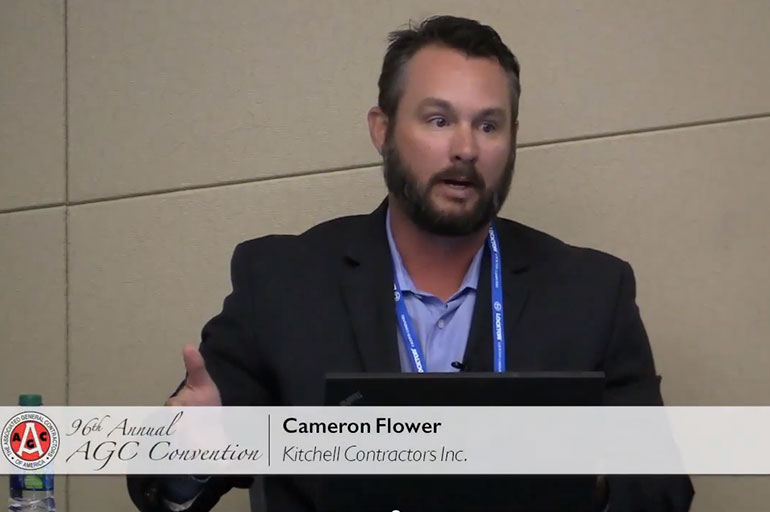Originally authored by Karen Strauss, Senior Editor
Recently, Kitchell’s very own environmental compliance authority Cameron Flower was invited to speak at a conference in Puerto Rico about Environmental Management Strategies for the Construction Industry. Flower provided instructive counsel, based on his own expertise, of how to start, and sustain, an environmental program at your own company.
He also shared a series of case studies, actually cautionary tales, about companies that neglected to take environmental protection seriously.
As a former environmental activist turned regulator turned consultant (and now chief steward of Kitchell Environmental Services), Flower brings a thoughtful and well-rounded perspective to the area of environmental compliance in the construction industry. He asserts that while companies have safety and quality assurance focuses, environmental protection efforts are often an afterthought. And that’s a risky place to be. Penalties for non-compliance can be astronomical (and with the advent of cell phone cameras being caught isn’t a matter of “if” but rather “when”) and related costs could be catastrophic (loss of work days, public relations headaches, etc.). To give an idea of the scope of the problem, in the last five years alone Maricopa County’s Air Quality Department issued approximately 7,500 notices of violation and collected between $15 and $17 million in penalties.
Here is Flower’s checklist of considerations and issues that should be addressed to ensure your environmental program is a success, now and into the future:
- Management buy-in at the top – company leaders must have a passion for it so it becomes part of the company culture.
- Designate, or hire, an environmental compliance champion for the company. If you don’t have one person to monitor, train, promote, and revise, your program will fail.
- This individual must be a strong communicator, adept at working with many different types of audiences: government/regulatory agencies, company executives, board members, vendors and field personnel.
- Write down your company’s environmental policy. If it’s not written down, no one will commit to the effort. Once the policy is written, attach attainable goals, monitor progress against these goals and celebrate successes within the entire company.
- Don’t try to do everything (dust, water, LEED, etc.) all at once. When starting your environmental effort, pick one area that’s important to you. Then, as you get more adept in this arena, add more areas of focus.
- Surround yourself with like-minded individuals. Network with colleagues, brainstorm ideas, attend conferences. Everything you are planning to implement has been done before so nothing you do will have to be from scratch. Learn best practices and adapt them to your company.
Cameron then shared tales from his world, where owners fell far short of their due diligence:
- In 2013, the geologist owner of a Santa Barbara-based company was arrested on charges of conspiracy to commit grand theft and defrauding the state. The case was prosecuted by the Office of the Attorney General on behalf of the People of the State of California. The penalty: $1.6 million, 180 days in jail and three years of probation during which time he will have to surrender his professional licenses and discontinue environmental remediation work.
- A home builder, one of the nation’s largest, had to pay $741,000 for storm water runoff violations – 600 violations in 23 States – and guarantee a consent decree requiring the company to implement a compliance program.
- The government alleged that a national home improvement store violated the Toxic Substances Control Act (TSCA), and the Lead RRP Rule. It failed to provide documentation showing that the contractors it hires to perform renovation projects for customers had been certified by the EPA, had been properly trained, had used lead-safe work practices, or had correctly used EPA-approved lead test kits at renovation site. As a result, the company had to pay $500,000 within 30 days of when the Consent Decree was entered by the court.
- It is incumbent upon construction companies to “do the right thing” as far as environmental compliance is concerned. It’s not a matter of seeing what you can get away with and hope you don’t get caught. We owe it to our children and future generations to do as little damage to the planet as possible. It’s a big responsibility but one that, given the consequences, is extremely easy to fulfill.
Please contact Cameron Flower at cflower@kitchell.com if you have any questions.
